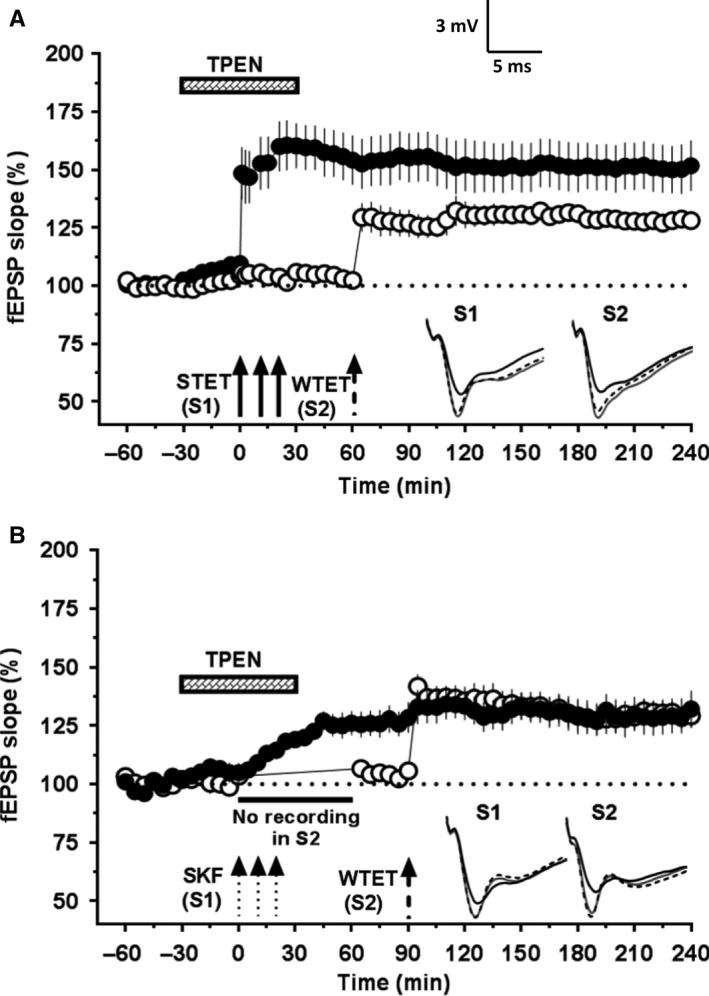Figure 6.

Hippocampal Zn2+ chelation re‐establishes synaptic tagging and capture of HFS‐induced L‐LTP and DA‐LTP in aged rats. The location of electrodes for both (A) and (B) was same as in Fig. 2A. (A) The experimental plan is similar as in Fig. 2C, but the slices were also treated with the Zn2+ chelator TPEN (5 μm) for 1 h after the baseline recording. STET in the presence of TPEN resulted in significant potentiation in S1 (filled circles) lasting 4 h (Wilcoxon's test, P = 0.004) and also transformed the E‐LTP induced in S2 (open circles) into a long‐lasting one (Wilcoxon's test, P = 0.008; n = 9). (B) The experimental plan is similar as in Fig. 2E, but the slices were also treated with TPEN (5 μm) for 1 h after the baseline recording. Application of SKF to aged rat hippocampal slices in the presence of TPEN resulted in restoration of potentiation in S1 (filled circles) that lasted for 4 h (Wilcoxon's test, P = 0.008) and re‐established STC leading to reinforcement of the E‐LTP in S2 (open circles, Wilcoxon's test, P = 0.008, n = 8). Insets show representative fEPSP traces for each input recorded at baseline (black solid line), 30 min after the respective tetanization/stimulation in each input (dotted line), and at 240 min (gray solid line). Symbols as in Fig. 1. Scale bar for the traces 3 mV per 5 ms.
